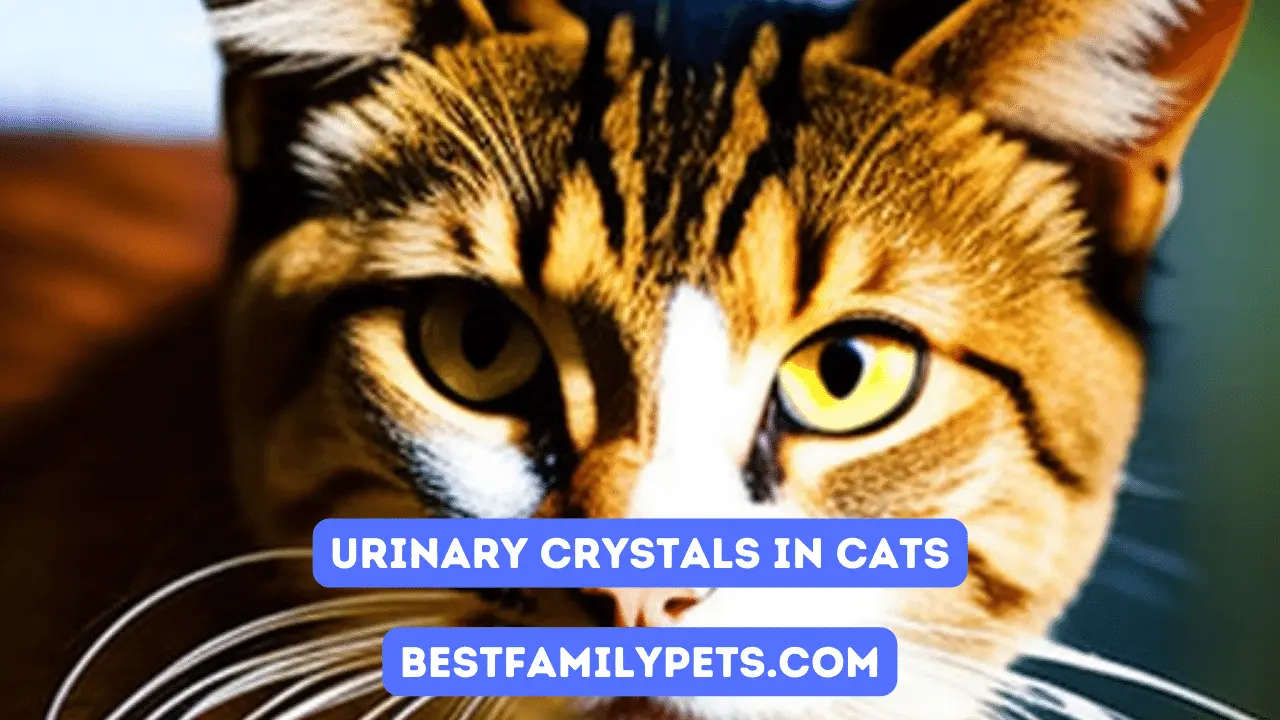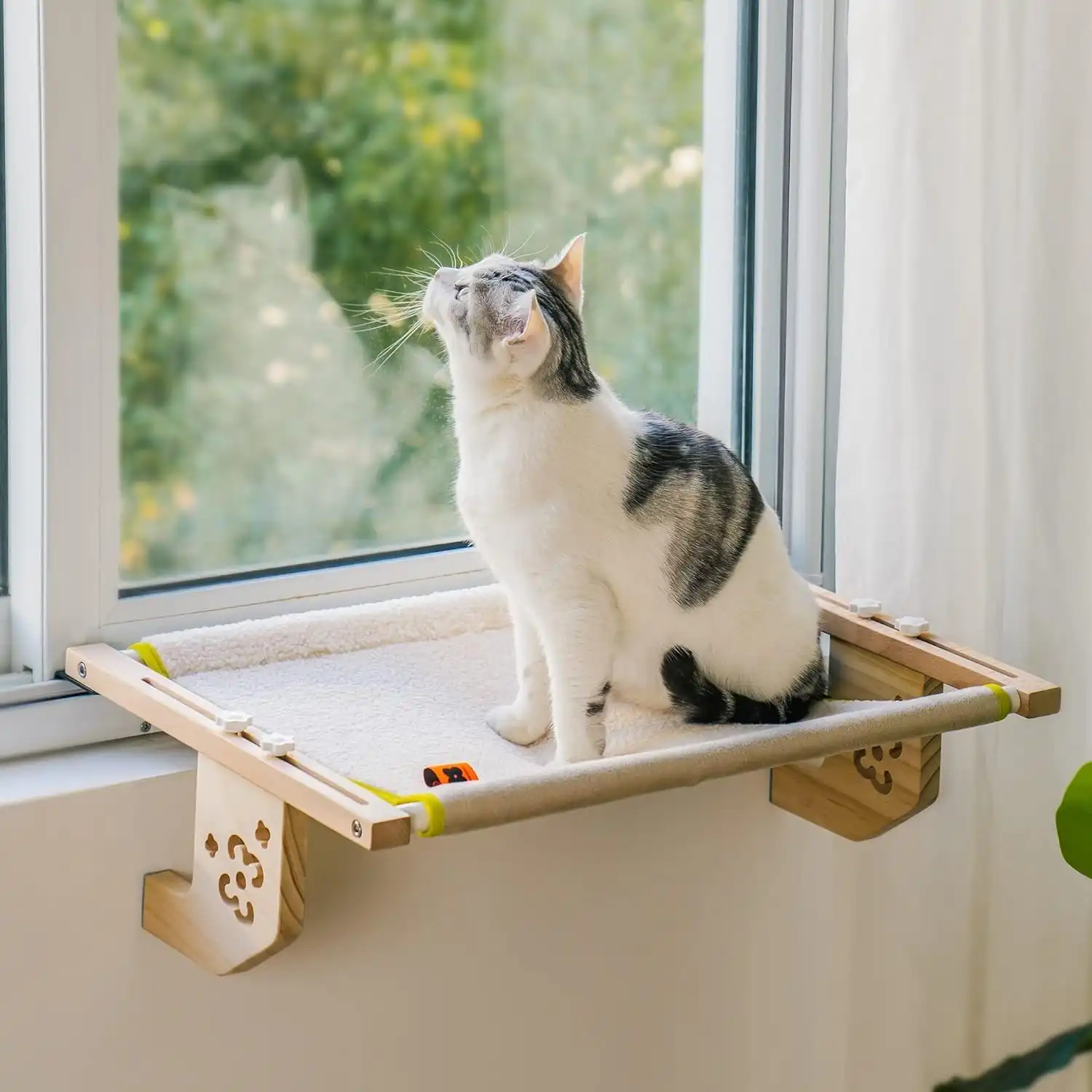Urinary Crystals in Cats: Treatment Options
Urinary crystals in cats are a common condition that can lead to serious health problems. Take steps to treat urinary crystals in your cat!
The first step is to understand what urinary crystals are. Crystals form when the urine becomes too concentrated. This can happen for several reasons, including dehydration, poor diet, and certain medical conditions.
Some types of crystals are more likely to cause problems than others. The most common type of crystal in cats is struvite. Struvite crystals can grow large and block the urinary tract. This can lead to infection and even kidney failure.
The best way to prevent urinary crystals is to feed your cat a balanced diet and ensure they stay hydrated. If your cat develops crystals, treatments are available to dissolve them and prevent further problems.
Talk to your veterinarian if you think your cat may have urinary crystals. They can help you identify the problem and create a cat urine crystals treatment plan to keep your cat healthy and happy.
Symptoms of Urinary Tract Disease
If your cat has been displaying symptoms of crystals in cat urinary tract disease and has been diagnosed with crystals, you are likely very keen to know what treatment options are available. Well, the treatment will depend on which type of crystal is involved, as the options are really quite different for each crystal type.
It is important to know if we are dealing with crystals alone, or if the crystals have developed into stones. In some cats, the stones that form are so big that they can actually be felt when the bladder is pressed on, though this is quite rare and most stones will be smaller than this. To determine if they are present or not, the vet will need to run a few more tests.
Ultrasound
Typically, an ultrasound of the entire urinary tract (including kidneys, ureters and bladder) will be carried out. Most (though not all!) cats are tolerant enough for this to be done while they are awake, though they do need to have a large portion of their belly fur clipped. An ultrasound is a painless and simple procedure that rarely takes longer than ten minutes and can be performed in most general vet clinics.
X-ray
Certain stones will show up better on an X-ray than an ultrasound and many cats will also have abdominal X-rays performed. Most kitties are too jumpy and nervous to have X-rays performed conscious so will either be given a sedation or an anaesthetic. X-rays are particularly good at showing up ‘radiopaque’ stones and the vet will get a good idea of how many stones are present and how large they are.
Hill’s Science Diet Urinary Hairball Control Dry Cat Food
Support your adult cat’s health with Hill’s Science Diet Urinary Hairball Control dry cat food, a premium chicken recipe tailored for cats aged 1 to 6. This 15.5 lb bag offers a dual-action formula designed to maintain optimal urinary tract health and effectively manage hairballs. Featuring optimal levels of magnesium, this specialized cat food helps support the entire urinary system, reducing the risk of common issues. Simultaneously, its blend of natural fibers comfortably works to minimize hairball formation, promoting a healthier digestive system for your feline companion.
Beyond its targeted benefits, this #1 Veterinarian Recommended cat food also contributes to a beautiful skin and coat, thanks to its rich content of Omega-6s, Omega-3s, and Vitamin E. These essential fatty acids and vitamins nourish the skin from within, leading to a lustrous and healthy-looking coat. You can feed your cat with confidence knowing this formula is made in the USA with trusted global ingredients, ensuring high quality and safety standards. Choose Hill’s Science Diet Urinary Hairball Control for comprehensive support that keeps your adult cat thriving, both inside and out.
Pros
- Dual-action formula supports urinary tract health and hairball control.
- Optimal magnesium levels for a healthy urinary system.
- Natural fibers comfortably reduce hairball formation.
- Enriched with Omega-6s, Omega-3s, and Vitamin E for healthy skin and coat.
- #1 Veterinarian Recommended cat food brand.
- Made in the USA with trusted global ingredients.
- Chicken recipe is appealing to many cats.
- Formulated for adult cats aged 1-6.
Cons
- Chicken recipe may not be suitable for cats with poultry allergies.
- Dry food format may not provide enough moisture for all cats, especially those prone to urinary issues.
- Specific kibble size is not mentioned, which can affect palatability for some cats.
Type of Stone
Finding out what type of stone is present can be a real challenge. Though it would be reasonable to think that if the cat was proven to have struvite crystals on their urine exam that any stones present would also be struvite, this is not always the case. Depending on the crystals present and other factors, such as the urinary pH, we can make an educated guess as to which types of stone are present. In reality, the only way to know for sure is to remove a stone and have it examined by a laboratory.
Struvite Crystals
Struvite crystals and stones are typically treated conservatively. Any underlying infection would need to be treated with a course of antibiotics (which have been based on culture and sensitivity) and the urine should be re-analysed when the course is finished to ensure the infection has been eliminated and is not grumbling on.
As soon as struvite crystals have been diagnosed, a prescription diet should be started. It is critical that this diet be the only source of food, as supplementing it with a different brand of kibble or some yummy treats will only negate the benefits. This can mean that cats who normally have access to the outdoors need to be kept in for a while as if they were to find something to munch on outside, they could delay the effects of the treatment. Similarly, if there are other pets in the household, they will need to be fed separately. This may mean the use of ‘microchip feeders’ in multi-cat households.
While urinary diets are available in wet and dry forms, most vets will recommend feeding the wet form if the cat will accept it. This is to encourage further dilution of the urine, ensuring more crystals do not form. Luckily, most cats prefer the taste of wet food.
Owners are also advised to encourage as much water drinking as possible, which may mean the purchase of water fountains. Water can be mixed in to the diet, even if it is already a wet diet.
One of the best-known diets used for eliminating struvite stones and crystals is called Hill’s C/D. This food is the preferred treatment choice of many vets and is nutritionally balanced but limited in the ingredients that can cause crystal formation, such as Magnesium, Phosphorous and Calcium. It is designed to keep urinary pH at optimal levels, preventing it from becoming too acidic or too alkaline. Many vets will monitor this over time, ensuring the urinary pH is staying where it should. You can read more on catcareadvices.com
Once the diet has been started, struvite crystals may dissolve in as little as a few weeks, though often it will take several months for them to completely disappear. The general consensus is that the diet should continue for at least one month after the stones no longer show up on X-ray, and many recommend feeding it life-long.
Calcium Oxalate Crystals
Dealing with Calcium Oxalate crystals and stones can be a little more of a challenge. Interestingly, these crystals used to be extremely rare but now account for roughly half of feline urinary crystals. Many believe that this is due to cats eating commercial foods that acidify the urine. If the crystals form in to stones, diets are not effective at dissolving them and they require more drastic intervention.
If the stones have formed within the bladder, the surgery is relatively straight forward and consists of making an incision and removing the offensive material. However, sometimes the stones can be sitting in the kidney or ureter, which can be a real issue. In these situations, cats may be referred to specialist surgeons with more experience in complicated cases.
Purina Pro Plan Urinary Tract Health Wet Cat Food (24-Pack)
Support your cat’s urinary health with Purina Pro Plan Urinary Tract Health Chicken Entree in Gravy wet cat food. This pack of 24, 3 oz. pull-top cans provides a delicious and highly digestible formula crafted to meet the unique needs of adult cats. This specialized cat food works to reduce urinary pH and features low dietary magnesium levels, both crucial factors in maintaining a healthy feline urinary system. Made with real chicken, it offers a taste cats naturally love, ensuring excellent palatability while delivering optimal nutrient absorption for overall well-being.
Beyond its targeted urinary benefits, this soft cat food with gravy provides focused nutrition, enriched with 25 essential vitamins and minerals, plus taurine—a vital amino acid supporting overall feline health, including heart function. You can feed your cherished companion with confidence, as Purina Pro Plan Urinary Tract Health formula contains no artificial preservatives and is proudly manufactured at Purina-owned facilities in the U.S. This high-quality wet cat food is an excellent choice for daily feeding to proactively support your cat’s urinary tract health and ensure a delicious, nourishing meal experience.
Pros
- Specifically formulated to support urinary tract health.
- Helps reduce urinary pH and provides low dietary magnesium.
- Made with real chicken for high palatability.
- Highly digestible formula for optimal nutrient delivery.
- Contains 25 essential vitamins, minerals, and taurine for overall health.
- No artificial preservatives.
- Manufactured in Purina-owned, U.S. facilities.
- Convenient 3 oz. pull-top cans in a 24-pack.
- Wet food format contributes to increased moisture intake, beneficial for urinary health.
Cons
- Chicken flavor may not be suitable for cats with poultry allergies or preferences for other proteins.
- While supporting urinary health, it does not replace veterinary-prescribed therapeutic diets for severe conditions.
- Small can size might require multiple cans per day for larger cats.
Crystals in Cats Are Dangerous
In some patients, stones will lodge in the urethra and cause a dangerous blockage. Cats will be unable to produce urine or will only produce it in very small amounts. Some of these stones that have lodged may be small enough that they can be guided back into the bladder safely, relieving the blockage and allowing the cat to urinate once again.
Vets can perform a technique called ‘retro hydropulsion’, whereby the stones are encouraged to move back into the bladder via pressure and the use of saline under high-power. As this can be quite uncomfortable, it is either performed under a heavy sedation or general anaesthetic. Once the stones have been moved from the riskier place to the bladder and the cat can pass urine again, the stones can then be dealt with. So, if the stones are calcium oxalate, a surgery will still be on the cards. Surgery to remove stones from the bladder is far safer than one which involves making an incision in the small urethra. If the stones are struvite, this procedure can mean that a surgery to remove the blockage is unnecessary and we have now bought some time for the diet to work.
More recently in the veterinary world, there has been a lot of interest in ‘Lithotripsy’, a method that is used a lot in human medicine. Sound waves are applied externally in order to break up the stones. Sometimes, laser lights and electricity are also involved. Most GP vets will not have access to this treatment, though several specialist centres are now able to provide it. This may be a useful option in cats that are not good surgical candidates.
Another technique that may be available in some specialist centres or universities is stone retrieval via cystoscopy. This is a sterile procedure that requires a general anaesthetic and is usually performed by a vet with special training. No incision is required, so the recovery time is very quick and the risks involved are minimal. A long instrument called a cystoscope is passed into the urethra and up into the bladder, collecting the small stones and removing them, without the need for an invasive surgery. During this procedure, vets also have the ability to visually assess the inside of the urinary tract, which can provide some useful information. Sometimes, anatomical defects, strictures or masses are found, so this can also be a useful diagnostic procedure. Vets have the option of taking a biopsy of any unusual tissue, which can be a very useful way of telling the difference between chronic inflammation and neoplasia.
In male cats in particular, this procedure is particularly tricky as they have such narrow tubes, but it is possible with very small instruments. Sometimes, a laser will be used at the same time as this procedure so that the stones can be broken up, allowing for easier removal.
It is well-known that cats who have formed crystals and stones in the past are likely to form them again. Due to this, owners are encouraged to be pro-active in their prevention at all times. Our next (and final) article in this series focuses on how to keep crystals and stones away for good.
Fresh Step Health Monitoring Crystal Cat Litter (14 lbs)
Gain proactive insights into your cat’s health with Fresh Step Crystals Health Monitoring Cat Litter. This innovative 14 lbs pack, containing two 7 lb bags, features color-changing litter crystals that help detect irregularities in your cat’s urine pH. The pH-activated crystals provide early indications of potential issues such as UTIs, bladder stones, and acidosis, allowing you to address concerns sooner. This lightweight crystal formula is easy to carry for you and gentle on your cat’s sensitive paws, ensuring a comfortable litter box experience for your feline friend. Beyond health monitoring, this litter offers powerful odor control, effectively blocking ammonia and maintaining a fresh litter box for up to 30 days.
Understanding your cat’s health signals is made simple with the convenient color scale printed directly on the bag, providing clear interpretations of the crystal color changes. For further assistance and a deeper understanding of your cat’s well-being, you can easily scan the QR code on the package to access the free Fresh Step Crystals Health Monitoring Litter online tool. Fresh Step offers a full line of clumping cat litter formulas to suit every feline family, but this health-monitoring option provides an extra layer of care, making it an essential addition to your pet’s routine for early detection and peace of mind.
Pros
- Color-changing crystals help detect urine pH irregularities (UTIs, bladder stones, acidosis).
- Provides early detection insights for potential feline health issues.
- Lightweight formula is easy to handle and gentle on paws.
- Effective odor control, blocking ammonia for up to 30 days.
- Includes a color scale on the bag for easy interpretation of health indicators.
- Free online tool via QR code for additional health monitoring support.
- Comes in a convenient 2 x 7 lb bag pack (14 lbs total).
Cons
- Color changes are indicative of pH shifts, but do not replace a veterinary diagnosis.
- Crystal litter may not be preferred by all cats or owners compared to traditional clay litter.
- While it controls odor, some users may find crystal litter less effective at solid waste odor containment compared to clumping litter.
- Price point may be higher than conventional litters due to health monitoring features.
Cat Urinary Crystals Home Remedy
If your cat has been diagnosed with urinary crystals, some home remedies may help to dissolve them and relieve your pet’s discomfort. One popular remedy is to feed your cat cranberry juice. Some owners also report success feeding their cats canned pumpkins or giving them a teaspoon of apple cider vinegar mixed with water daily. If you decide to try any of these home remedies, speak with your veterinarian first to ensure they are appropriate for your cat’s individual health needs.
Cat Urine Crystals Natural Treatment
If your cat has problems with crystals in their urine, there are some cat urine crystals natural treatment you can try at home. Apple cider vinegar, for example, can help to break down the crystals and make them easier to pass. You can also add more moisture to your cat’s diet by feeding them wet food or adding water to their dry food. Finally, ensure your cat is getting plenty of exercises to help keep their urine flowing. If you’re concerned about your cat’s health, talk to your veterinarian about other options.
Apple cider vinegar can also help with the symptoms of crystals in the urine. Soak a cotton ball in the vinegar and apply it to the affected area. This will help to soothe the pain and inflammation. You can also give your cat a few drops of apple cider vinegar in their water bowl each day.
If you’re looking for a more natural way to treat crystals in your cat’s urine, consider adding more moisture to their diet. Feed them wet food or add water to their dry food. You can also give them plenty of freshwaters to drink.
Finally, make sure your cat is getting plenty of exercises. This will help to keep their urine flowing and prevent the crystals from forming in the first place. If you’re concerned about your cat’s health, talk to your veterinarian about other options.
Diamond Care Urinary Support Dry Cat Food (6 lb)
Support your feline’s urinary health with Diamond Care Urinary Support Cat dry food, a 6 lb bag featuring a delicious chicken recipe. This specialized formula is designed to help reduce urine pH, promoting a healthy urinary tract environment, and serves as an excellent alternative to more expensive veterinary urinary diets. Beyond its targeted urinary benefits, this complete and balanced cat food is enriched with optimal levels and a balanced ratio of Omega-3 and Omega-6 fatty acids. These essential fatty acids work together to maintain healthy skin and a lustrous coat, ensuring your cat looks as good as they feel.
You can trust the quality of Diamond Care products, as this cat food is proudly family-owned and made in the USA. It uses ingredients sourced from trusted global suppliers, adhering to scientifically advanced protocols for food safety. Rest assured that your cat is consuming a wholesome diet, free from artificial flavors, colors, or preservatives. For added peace of mind, Diamond Care provides prompt access to veterinary consultation (call 844-813-2116), demonstrating their commitment to your pet’s well-being. Choose Diamond Care Urinary Support Cat food for a beneficial and palatable dietary solution for your cat’s urinary needs.
Pros
- Formulated to reduce urine pH for urinary tract health.
- Cost-effective alternative to more expensive urinary diets.
- Complete and balanced nutrition.
- Optimal Omega-3 and Omega-6 fatty acid ratio for healthy skin and coat.
- Made in the USA by a family-owned company with trusted global ingredients.
- No artificial flavors, colors, or preservatives.
- Provides access to veterinary consultation support.
- Tasty chicken recipe for palatability.
Cons
- Chicken recipe may not be suitable for cats with poultry allergies or specific protein preferences.
- Dry food format may not provide adequate moisture intake for cats prone to urinary issues; consider supplementing with wet food.
- While supportive, it may not be a substitute for prescription diets in severe or recurrent urinary conditions without veterinary guidance.
- 6lb bag might be a smaller size for multi-cat households.
Treatment Options for Urinary Crystals in Cats
Here are some treatment options that may help with urinary crystals in cats:
- Dietary changes: Feeding your cat a special diet that helps prevent the formation of crystals in the urine is one of the most effective ways of treating urinary crystals in cats. Your vet may recommend a prescription diet that is low in magnesium and phosphorus and high in moisture content.
- Increased water intake: Encouraging your cat to drink more water can help flush out the urinary tract and prevent the formation of crystals. You can try adding water fountains or wet food into your cat’s diet.
- Medications: Your vet may prescribe medications such as potassium citrate or methionine supplements that help acidify the urine and prevent crystal formation.
- Surgery: In severe cases, surgery may be required if there is a blockage in the urinary tract.
It’s important that you consult with your veterinarian before starting any treatment options as they can provide you with more information on what would be best suited for your cat’s specific needs.
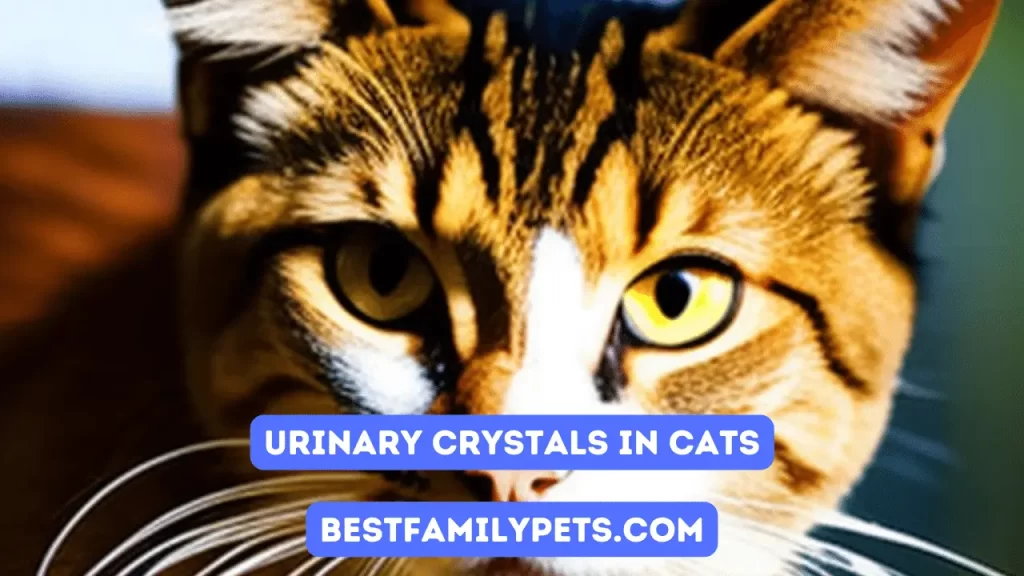
FAQs About Urinary Crystals in Cats:
Learn about urinary crystals in cats, their causes, and effective treatment options to support feline health.
What are urinary crystals in cats?
Urinary crystals are microscopic mineral formations in a cat’s urine that can cause discomfort or blockages. Common types include struvite and calcium oxalate, often linked to diet, hydration, or urinary pH imbalances.
What causes urinary crystals in cats?
Urinary crystals in cats can result from diet, inadequate water intake, urinary tract infections, or genetic predispositions. High-mineral foods, stress, or obesity may also contribute to crystal formation.
What are the symptoms of urinary crystals in cats?
Symptoms include straining to urinate, frequent urination, blood in urine, or urinating outside the litter box. Cats may also show signs of pain, lethargy, or reduced appetite, requiring prompt veterinary attention.
How are urinary crystals diagnosed in cats?
Veterinarians diagnose urinary crystals through urinalysis, examining urine for crystal types and pH levels. Imaging like X-rays or ultrasounds may be used to detect blockages or stones in severe cases.
What dietary changes help treat urinary crystals?
Specialized prescription diets can dissolve struvite crystals or prevent recurrence by adjusting urinary pH and mineral content. Increased water intake, often via wet food, also helps flush crystals from the bladder.
Can urinary crystals in cats be treated with medication?
Medications may be prescribed to manage infections, reduce inflammation, or adjust urine pH. Pain relievers or muscle relaxants can also ease discomfort, but they complement dietary and lifestyle changes.
Is surgery required for urinary crystals in cats?
Surgery may be needed for large stones or blockages that cannot be dissolved with diet or medication. Procedures like cystotomy remove obstructions, particularly in cases of calcium oxalate crystals.
How can I prevent urinary crystals in my cat?
Prevent urinary crystals by ensuring ample water intake, feeding a balanced diet, maintaining a healthy weight, and reducing stress. Regular veterinary checkups help monitor urinary health and catch issues early.
Are certain cat breeds prone to urinary crystals?
Breeds like Persian, Siamese, and Burmese may have a higher risk of urinary crystals due to genetic factors. However, any cat can develop them, especially with poor diet or hydration.
How long does treatment for urinary crystals take?
Treatment duration varies. Struvite crystals may dissolve in weeks with dietary changes, while calcium oxalate stones may require surgery. Ongoing management, including diet and hydration, prevents recurrence.
Urinary crystals in cats – Dr. Justine Lee
-

MEWOOFUN Sturdy Cat Window Perch Review: A Cozy Spot for Your Feline
-



Purr-fectly Delicious: A Review of Astkatta Iceland Canned Cat Food and Feast Cat Wet Food
-



How to Use Puppy Training Pads Effectively
-



Feed the Beast Right: Why Pet Nutrition Isn’t Just Kibble and Luck
-



Large Dog Door Mat for Muddy Paws: A Must-Have for Pet Owners
-



Pet Euthanasia in Gilbert: Compassionate Care Options
-


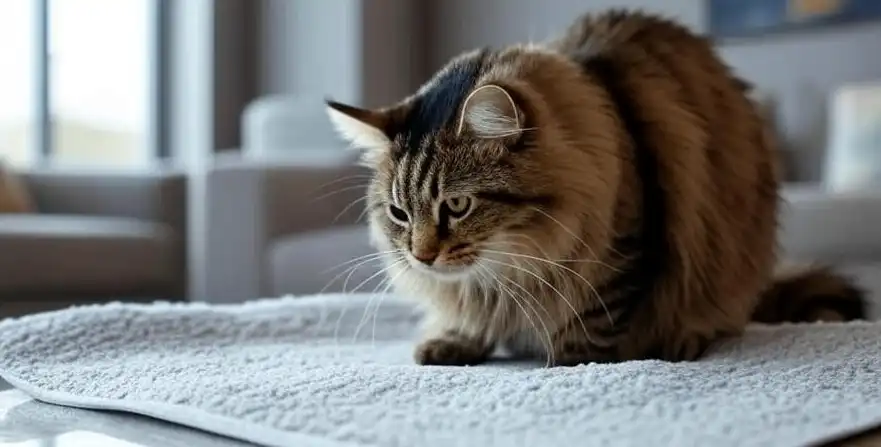
SMARTBEAN Cat Scratch Furniture Protector: A Must-Have for Pet Owners
-



Memorial Plaque for Dog: A Heartfelt Tribute to Your Pet
-


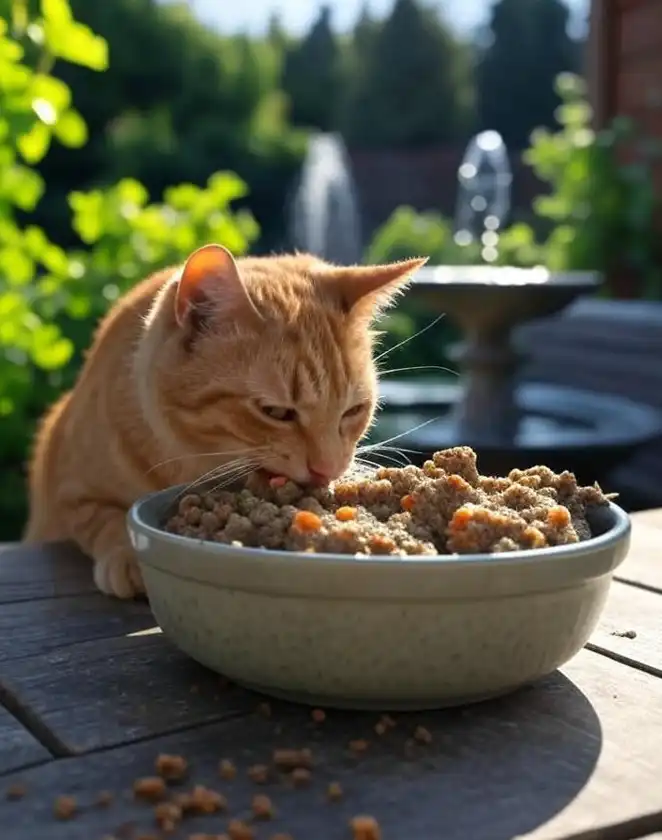
Cat Nutrition Guide for Optimal Feline Health
-


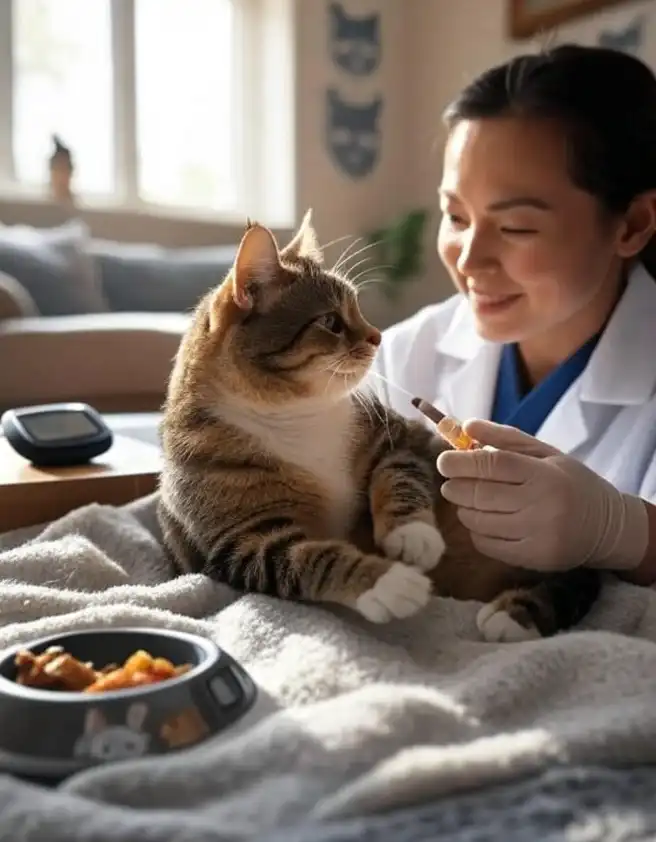
Feline Diabetes Care: A Guide for Pet Owners
-


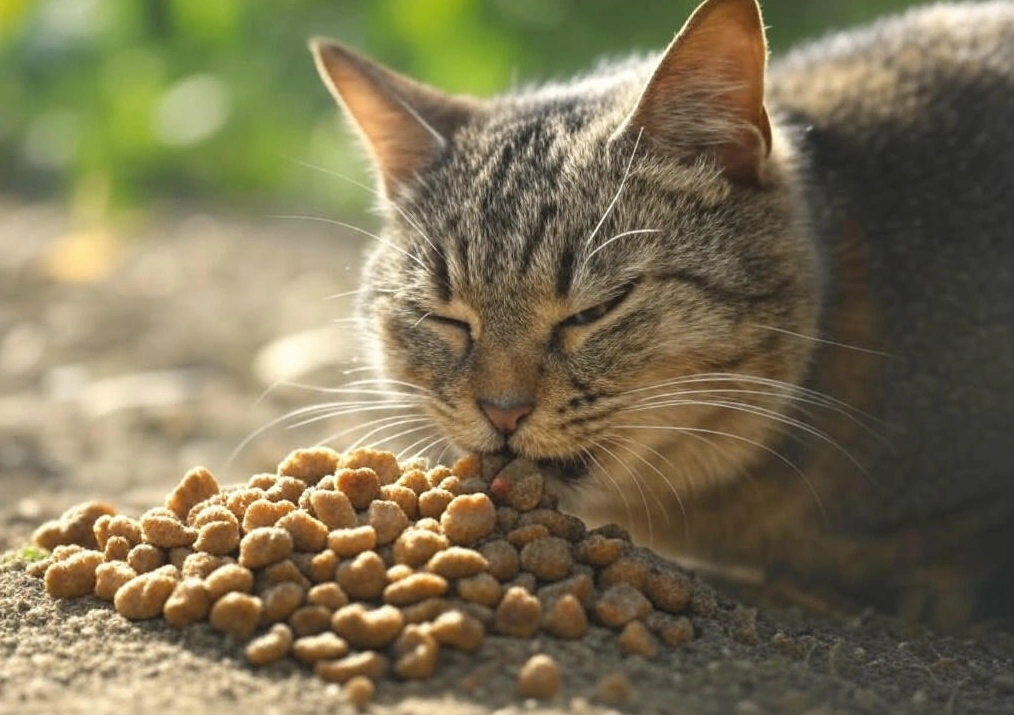
Blue Buffalo Healthy Gourmet Cat Food Reviews: A Comprehensive Guide for Pet Owners
-



Paco & Pepper: Environmentally Friendly Cat Litter That is Ideal for Your Cat
-


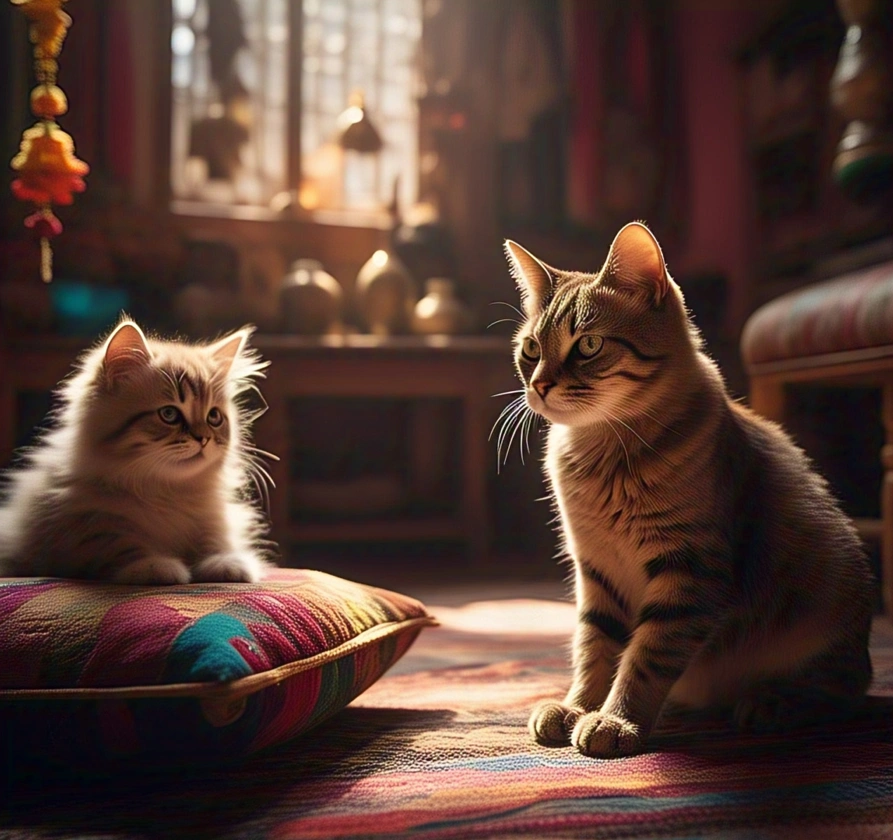
Indian Cat vs Persian Cat: Pick Your Pet
-


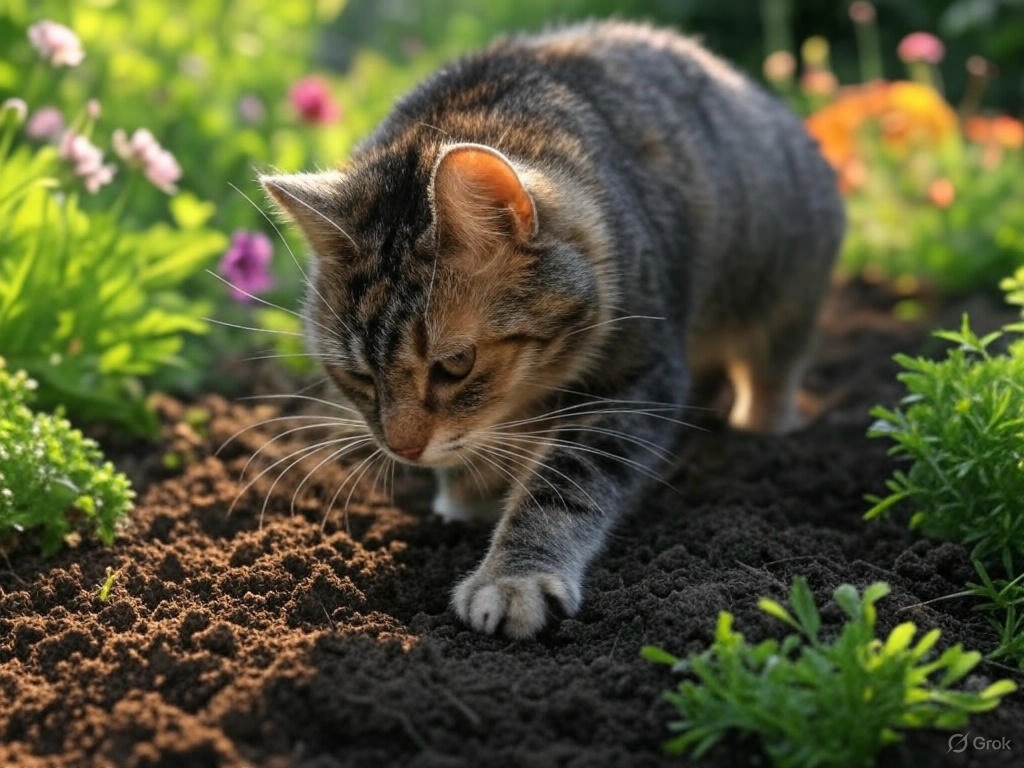
How to Stop Cats from Digging in Your Garden: A Comprehensive Guide
-



The Ultimate Guide to Choosing the Perfect Cat Name

